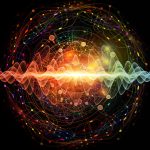Support of the Big Bang
 The first assignment in my Universe class was to support the Big Bang theory in under 500 words.
The first assignment in my Universe class was to support the Big Bang theory in under 500 words.
Since I believe that knowledge should be always obtainable in distribution and content level, I have written this at a U.S. high school level and I used my 14 year old son to proofread.
The content below has been updated with suggestions from Dr. Grant Miller.
What evidence is there for the Big Bang?
As early as 1912 an astronomer detected a galaxy’s doppler shift that indicated the body was moving away from us. At the time there was more significance in the what was happening compared to the why it was happening, observations have for over 100 years been mounting to confirm aspects of The Big Bang Theory.
The range of phenomena that we test and reprove related to The Big Bang Theory only begins with the concept of the Universe expanding, however this is a very important point. The idea that the singularity from which the Universe began had grown into the reality that we observe implies a massive expansion, and even raised questions of collapse by scientists including Albert Einstein; however, advances in testing do not support that expansion will reverse to collapse. In fact, the concept of the expansion has been tuned to support data which suggests that the universe is expanding at speeds proportion to their distances from us[1].
If we follow the evidence that the Universe is expanding, then the obvious questions become, from what origin, and for how long, as well as, what was there before. The expansion begs that the beginnings we smaller and the magnitude of the expansion suggests that there was a lot of energy fueling the process.
To address the origin from the perspective of size, we rely on a particularly clever tool called the Friedmann–Lemaître–Robertson–Walker metric (FLRW metric) which is able to measure the multidirectional expansion by placing the relative unit bodies onto a grid. By combining the idea of comoving coordinates and the scale factor the grid can be used to measure the velocity of expansion, which tells us not only the direction but the speed, and therefore distance.
Once we understand how the Universe is moving around us, it becomes practical to use that math to work our way back to origin, which we believe to be roughly 13.7 billion years old.
As to what fueled the event, we have the benefits of observing space itself for by-products of the initial expansion. Fortunately, we have been able to detect the Cosmic Microwave Background radiation (CMB) which has been left over[2] from that era, and it is literally everywhere in space. The by-product CMB is the evidence that allows us to reverse engineer the process to determine the original biochemistry.
Next, there is mounting data being collected that provides us an opportunistic glimpse into the past. By combining the abilities, we currently have, to see far with the understanding that light has a finite speed we can see history. The great distances that we deal with in space allow us to observe light that has been travelling to us since the actual light source has long since gone, but we can still see that light, and with modern tools we can witness the distance, direction, and speed of the objects.
[1] Hubble’s Law states that galaxies are moving away from us at a speed proportional to their distance.
[2] Arno Penzias and Robert Wilson discovered a 2.725-degree Kelvin Cosmic Microwave Background radiation (CMB) in 1965 winning them the Nobel Peace Prize.